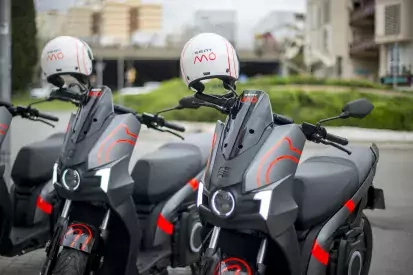How micromobility could change the industry

How micromobility could change the industry
Making mobility more sustainable is core to the automotive industry’s future success. But it will mean embracing other forms of transport, some of them much smaller than we’re used to.
Automotive is an integral part of government plans around the world to reduce carbon emissions and become more sustainable.
There’s a huge emphasis placed on passenger and commercial vehicles – highlighted by the push to electrify the vehicle parc – but that isn’t the only avenue to reducing the impact of personal mobility on the environment.
Bicycles, mopeds and e-kickscooters, whether electric or traditionally powered, are all part of the future. And a survey by consultancy firm McKinsey & Company shows the willingness to take control of new modes of transport, not just in the UK but around the world too.
The Mobility Ownership Consumer Survey, conducted by the McKinsey Center for Future Mobility, showed there was real enthusiasm about the different options available, with almost 70% stating that they were willing to use micromobility vehicles for their commute.
Results showed that whether it was China, the US or the UK, the humble bicycle was the most popular form of alternative, but there was also an embracing of mopeds and e-kickscooters. In the UK, 23% of respondents were open to using those modes of transport – in China that leapt to 37%.
Two-wheeled transport is key to reducing emissions and dependency on fossil fuels and the options are expanding. You only have to look at the different mopeds on the market – especially electric versions - to see how the market is adapting to growing demand.
The biggest brands in the industry are working together to make it happen: KTM, Piaggio, Honda and Yamaha are joining forces to develop the battery technologies that will power everything from motorcycles to mopeds, quadricycles to scooters. Even car companies are getting involved – SEAT has launched both an electric moped and an e-kickscooter.
But the growth in micromobility options and the public’s willingness to embrace them does raise challenges for the industry, highlighted by McKinsey & Company:
“Shared-mobility providers must understand local transportation habits for any city or region in which they wish to operate. Generally, providers first pick the cities in which they want to operate and then examine local preferences to determine what modes of transport will be in greatest demand. At some point, they may expand their product portfolios - for instance, adding mopeds to the bicycle options - in certain locations. A combined fleet, in which vehicles have different maintenance requirements, charging needs, and life cycles, will also increase strategic and operational demands,” it said.
Any shift to micromobility will also impact charging and parking requirements, public-transit operators and also the cities they operate in.
As the world shifts, it isn’t just an electrified fleet of passenger and commercial vehicles that will keep us all mobile and the economy moving, but micromobility options too.




